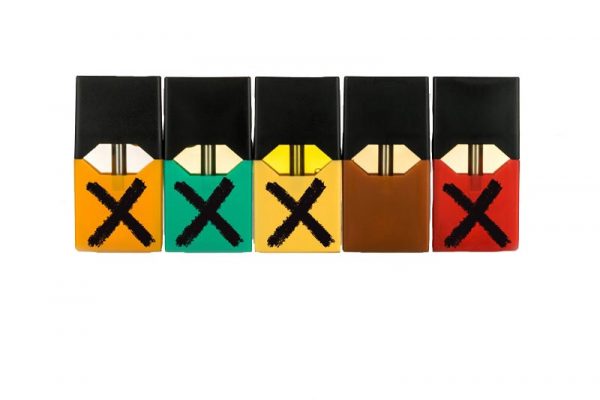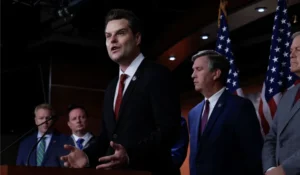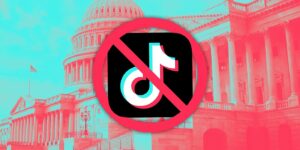The Politics of Vaping

Early last week, President Trump’s views on vaping changed, making him abandon his plans of a flavored vape ban. The White House suggested a prohibition-like America filled with illegal flavored vapes and concerns about losing votes so close to the 2020 election as reasons for the abrupt policy reversal. All of this political controversy over vaping began in September when some of the first vaping-related deaths were reported.
First Lady Melania Trump’s tweet about how she was “deeply concerned” about the youth and vaping helped to further turn the nation’s attention towards the epidemic. Regardless of the national politics of vaping, it is a problem here at Hills West. Nurse Stephanie believes that vaping has become significant among younger people because of how social media portrays vaping as a ‘cool’ thing to do. Sadly, the joke of bathrooms being ‘Juul rooms’ does have some real roots. Since vaping is illegal for minors and on NYS property, Half Hollow Hills will involve the police if a student is caught with any vaping paraphernalia. This has become such an issue that every year, students are reminded during the Code of Conduct Assembly about the repercussions of vaping on school grounds.
Vaping addiction had previously been seen as harmless, but this fall changed the opinions of much of America. As of November 20, 2019, the CDC reported that there have been 2,290 vaping related illnesses and 47 vaping related deaths, a majority of the victims have been under the age of 35. The youngest death was a 17 year old Bronx native; the first death in all of New York state.
Although many of these cases involved open vape pods, they could have been avoided if there was no craving for them in the first place. The forbidden fruit that is the vape pod is far more addictive than a cigarette (1 pod = 20 cigarette’s worth of nicotine).
Even before the recent data demonstrating the harm of vaping, scientists warned people about the unknown potential harm that vaping could cause. Recent studies tie vaping to lung and bladder cancer in mice, demonstrating its potential long term effects on humans. Recently, a 17 year old Detroit native was forced to undergo double lung replacement surgery. Vaping slowly deteriorated the ability of his lungs to function, transforming his pneumonia into lung failure. Popcorn lung (the condition where the smallest lung airways are damaged and cause shortness of breath) is one of the known effects of vaping (similar to emphysema) and can lead to frequent cases of bronchitis.
According to the Food and Drug Administration, over 500,000 middle schoolers and 3 million high schoolers out of the almost 15 million in the US use some kind of vaping device. It is commonly said that these numbers are caused by the tobacco industry’s practices. The tobacco industry is accused of targeting younger adults and teenagers with their advertisements that imply vaping raises happiness and social status, flavors that get teens hooked (4 out of 5 kids who use tobacco have first used flavored products), and concealable devices (looks like lead refills, flash drives, pens).
CNN has speculated that the voting power of the “we vape, we vote” movement helped to reinforce the Trump campaign’s worries about turning votes against them with a flavored vape ban. Many swing states are potentially going to have single issue voters. While Trump did take back his plans of a flavored vape ban, he did propose that we raise the national minimum age for vaping from 18 to 21.
The entire issue of vaping began in China during the early 2000s, where Hon Lik developed the first commercial e-cigarette designed to get smokers off of cigarettes, cigars, and chewing tobacco. Although vaping devices and e-cigarettes were initially invented as a safe alternative to smoking, they have become an issue of their own. Vaping is no longer just an alternative for long-time smokers who hope to break their addiction; it has become a new addiction affecting teenagers and young adults. In high schools, students often joke, ¨Why are there toilets in the Juul Room?” Even worse, it is making kids more likely to smoke, the same thing that the device is supposed to combat. Many big tobacco companies, such as Marlboro, bought stock in companies such as Juul.
On a much more local level, Nassau County has given preliminary approval to a bill that temporarily outlaws the sale of flavored e-cigarettes and liquid nicotine (includes vape cartridges and Juul pods). Only mint, menthol, and flavorless pods and cartridges are allowed to be sold without a fine. On October 28, 2019, the vote on the bill was postponed when the speaker brought up how vaping has helped smokers quit. The Nassau County legislature postponed the vote to conduct more research about the positives of vaping.
In order to combat the vaping epidemic, strategies similar to those used in the 1980s against smoking will be re-applied to vaping. These strategies, such as banning flavored cigarettes, have significantly decreased the youth smoking rate by about 75% and adult rate by about 45%. Theoretically, if legislation similar to that put on tobacco in the past is applied to vaping, there will be (could be, or at least that is the idea behind legislation) a decrease in the number of people who vape.
However, many vape stores will be hurt by sweeping government bans on vaping. These businesses generate most of their revenue by selling vape cartridges. They also claim that they are not the root of the vaping epidemic and would not sell to underaged children because these businesses get checked by undercover police officers.
Vape businesses believe the fault of the epidemic and deaths lies with online dealers and homemade cartridges that may have THC (‘high’ creating chemical found in marijuana) in them. These illegal operations are known to water down their solutions for vape pods with vitamin E acetate, a sticky substance that causes lung damage similar to that of mustard gas.
The Trump Administration called together experts from both sides of the issue, including Utah Senator Mitt Romney, for a “vaping summit” meant to find a solution to the problem. Although a solution was not agreed upon, the White House promised to conduct another meeting in the near future.







